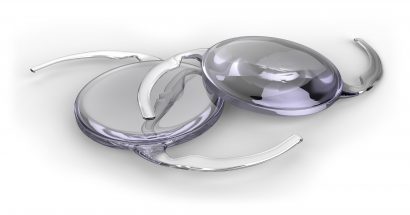Monofocal vs. Multifocal IOLs – The Choices are Getting Better
Written by Dr. David Evans Last modified on April 22, 2019

If you have cataracts and are considering surgery, you have options when it comes to which type of intraocular lens (IOL) or combination of lenses should be placed in your eyes. Monofocal IOLs have been approved for implantation in the U.S. for more than 15 years, their chief benefits being that they treat presbyopia and provide near vision without glasses. However, with great improvements having been made in multifocal technology, many patients are now opting for multifocal IOLs instead of the monofocal option.
Whereas a monofocal IOL provides focus at only one distance, a multifocal IOL provides vision across varying distances. As a consequence, it sacrifices the quality of distance vision due to multiple overlapping images of near and distance objects.
A number of factors should be considered when you are choosing a lens. For instance, how important is your distance vision? If you are a pilot that requires excellent distance vision in both eyes, then a multifocal IOL may not be your best bet. But if lifestyle is more important and being glasses-free under all lighting environments is your preference, then a multifocal IOL may be the best choice. Don’t expect that you will have the full range of crisp vision at both near and distance that you had as a youth. The choice has to be based on your vision needs, what is most important to you and the compromise you are willing to tolerate for one visual distance versus another.
Not to complicate things too much, but there are IOL combinations that can provide an excellent middle ground for treating presbyopia based on your vision needs. A combination of a multifocal lens in one eye and a monofocal in the other can provide for good vision at many distances — although distance vision is still slightly compromised in the multifocal eye. Another option is monovision treatment, which involves the use of two monofocal lenses with different focusing distances; one eye is selected for near vision and the other for distance.
Another factor to consider is cost. While monofocal IOLs typically are fully covered by insurance or Medicare, multifocal IOLs are considered premium and involve an additional fee. Since the cost of surgery is per eye, the most expensive option for presbyopia correction is a multifocal IOL in both eyes, and the least expensive is monovision treatment with standard monofocal IOLs. The cost for the premium IOL versus the standard monofocal IOL should be discussed with your surgeon.




